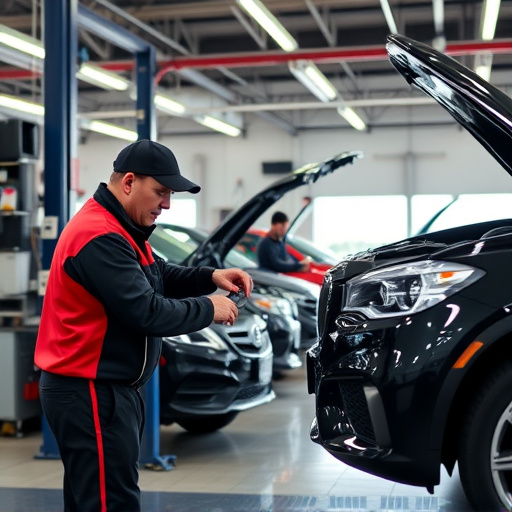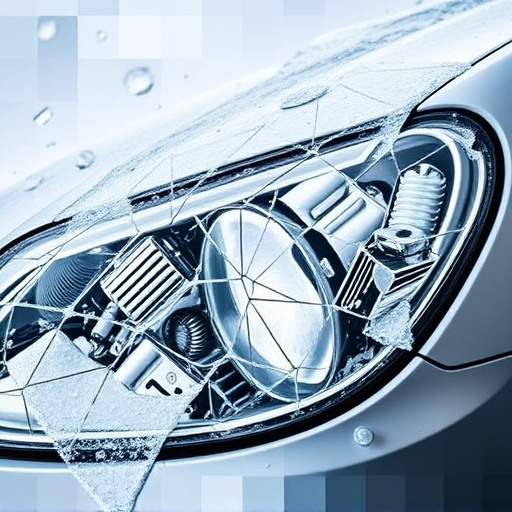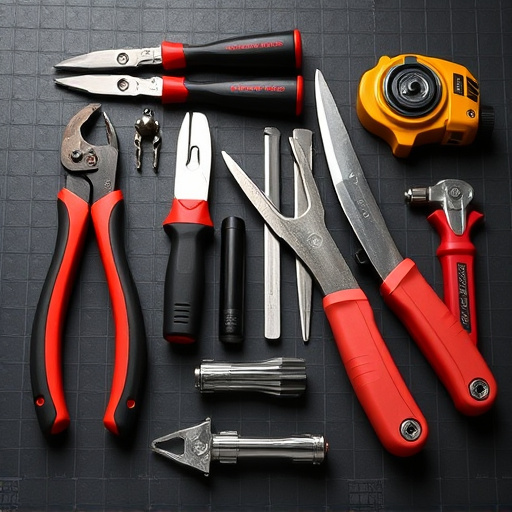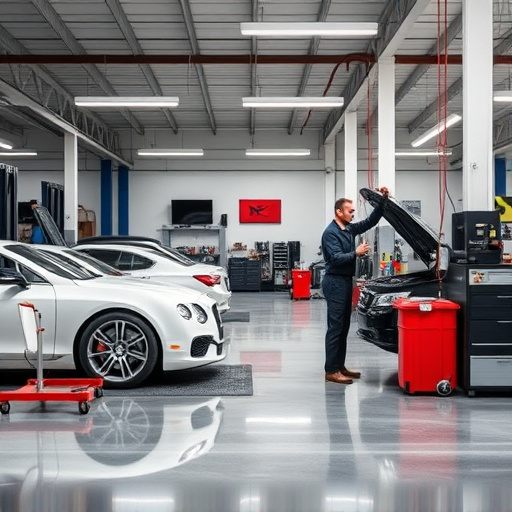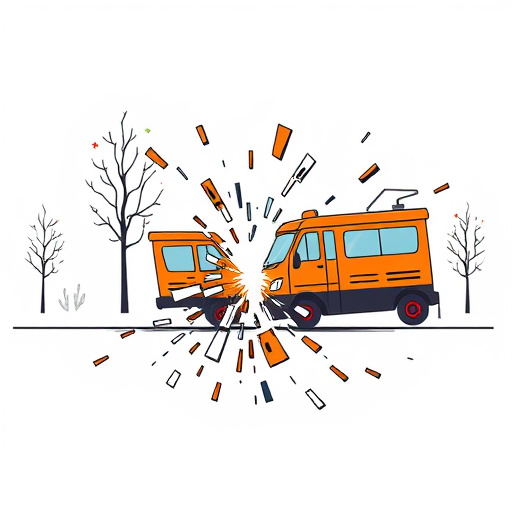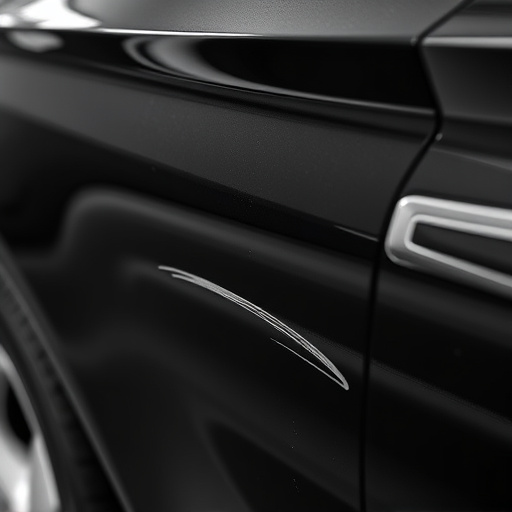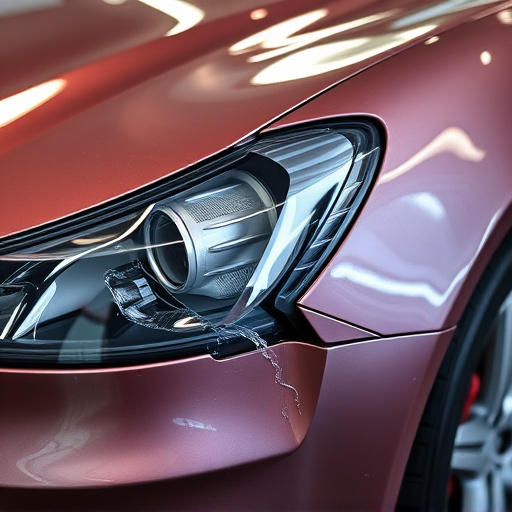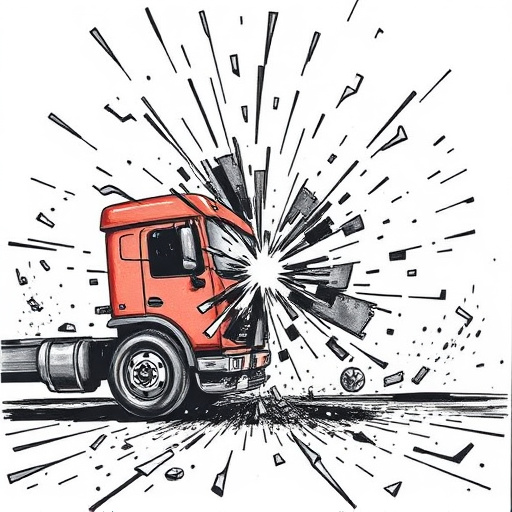Choosing collision repair certification involves weighing OEM (original equipment manufacturer) and independent options. OEMs guarantee brand-specific standards and precise repairs but offer limited flexibility. Independent certifications provide broader adaptability for diverse makes and models, catering to varied customer needs. Reputation, examination rigor, and service scope are key factors when evaluating either type for reliable auto repair services.
In the realm of automotive craftsmanship, collision repair certification is paramount for ensuring quality and safety standards. This article delves into the intricate differences between OEM (Original Equipment Manufacturer) and independent collision repair certifications. We explore how these credentials impact the industry, examining criteria for evaluation, along with the unique benefits and challenges each pathway presents. Understanding these distinctions empowers automotive professionals to make informed decisions regarding their career trajectory and shop operations in the competitive landscape of collision repair services.
- Understanding OEM vs Independent Certifications
- Criteria for Collision Repair Certification Evaluation
- Benefits and Challenges of Each Certification Pathway
Understanding OEM vs Independent Certifications
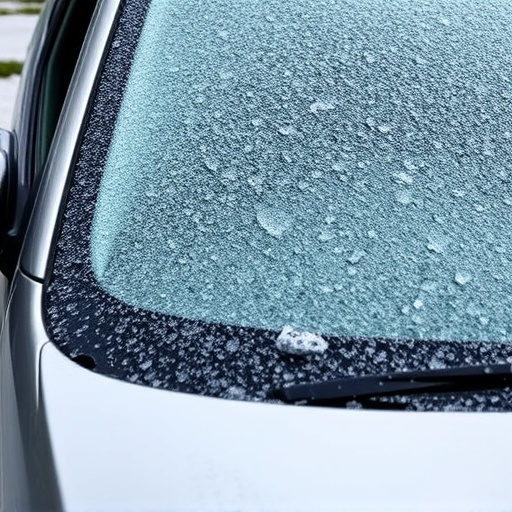
In the realm of collision repair, understanding the distinction between OEM (Original Equipment Manufacturer) and independent certifications is paramount for consumers seeking reliable vehicle repair services. OEM certifications are bestowed upon shops that demonstrate expertise in repairing vehicles to the exacting standards set by the car manufacturers themselves. This ensures that the fender repair, car paint services, and overall restoration meet the original specifications, preserving the vehicle’s make and model integrity.
On the other hand, independent certifications from recognized organizations validate a collision repair shop’s proficiency in various aspects of automotive repairs, including structural integrity, painting techniques, and safety standards. While these certifications don’t replicate OEM standards precisely, they offer reassurance that the shop provides high-quality vehicle repair services with a focus on customer satisfaction and adherence to industry best practices.
Criteria for Collision Repair Certification Evaluation
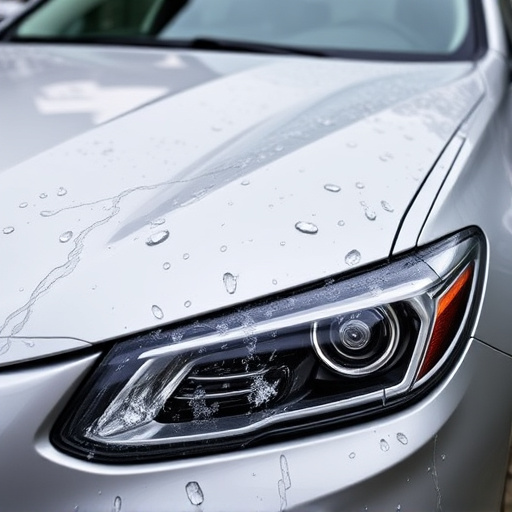
When evaluating collision repair certifications, several key criteria come into play. Firstly, consider the organization issuing the certification. Reputable bodies like the National Institute for Automotive Service Excellence (ASE) or industry-specific standards set by Original Equipment Manufacturers (OEMs) are reliable indicators of quality. These organizations typically have rigorous examination processes and ongoing training requirements, ensuring that certified technicians possess up-to-date skills and knowledge.
Additionally, look into the scope of certification. Does it cover a wide range of collision repair services, including complex tasks like car dent removal, bumper repair, and intricate body panel work? Or is it more specialized? Understanding the depth and breadth of coverage ensures that the chosen certification aligns with the needs of both technicians and customers, especially when seeking reliable auto repair near me.
Benefits and Challenges of Each Certification Pathway

Choosing between OEM (Original Equipment Manufacturer) and independent collision repair certifications involves understanding the unique benefits and challenges each offers.
OEM certification tracks align closely with car manufacturer standards, providing advantages like specialized training on the latest models, genuine parts expertise, and brand-specific repair techniques. This makes it ideal for those who prioritize precision in complex automotive body work and want to offer customers top-tier repairs that match their vehicle’s original specifications, including meticulous car dent removal. However, OEM programs can be stringent with limited flexibility, often requiring adherence to rigid protocols that might not accommodate independent shops’ unique workflows or individual technician expertise.
Independent collision repair certifications, on the other hand, offer a broader range of freedom and adaptability. These programs focus on mastering various automotive body work techniques, enabling technicians to tackle diverse makes and models. This versatility makes it appealing for businesses aiming to cater to a wider customer base engaging in everything from routine car dent removal to comprehensive car restoration projects. While independent certifications provide flexibility, they might not carry the same level of brand recognition or guarantee access to exclusive manufacturer parts and training resources as OEM programs do.
When considering a career in collision repair, understanding the distinction between OEM and independent certifications is vital. Both have their merits, with OEM certifications offering specialized knowledge directly from vehicle manufacturers, while independent programs provide broader skills and flexibility. Evaluating criteria like curriculum, industry recognition, and job placement rates is essential for making an informed choice. Ultimately, the ideal path depends on individual goals, whether focusing on specific vehicle makes or gaining a well-rounded skill set in the diverse collision repair landscape.
